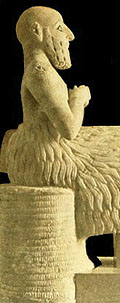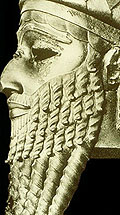 In every developing culture, then, specialization, new security needs, and more intense population pressure on limited resources tended to produce greater organization within the community, which in turn led to social hierarchies. Different cultures and circumstances produced different kinds of responses to those pressures, but typically certain forms of chieftainship emerged followed gradually by a whole class or classes of people who had managing roles.
In every developing culture, then, specialization, new security needs, and more intense population pressure on limited resources tended to produce greater organization within the community, which in turn led to social hierarchies. Different cultures and circumstances produced different kinds of responses to those pressures, but typically certain forms of chieftainship emerged followed gradually by a whole class or classes of people who had managing roles.For example, in the Near East, in Mesopotamia, the priestly figures who had knowledge of writing and the calendar formed the earliest known formal ruling class within the small city states that developed there. This priestly ruling class depicted themselves as stewards or servants of the gods, acting in behalf of the community. As time went on, and population in the region grew, creating other rival city states, the priestly rulers, called "Ensi" in the language of Sumer, came to rely more and more on military leaders who led the city's army and protected the city from outside threats. Over time, the Ensi found their authority challenged by this new class of military leaders, who were called "Lugal"--King.
 Click HERE to see a graphic illustration of the basic process of the emergence of different classes within the world's earliest civilized society.
Click HERE to see a graphic illustration of the basic process of the emergence of different classes within the world's earliest civilized society.
As population in the region grew and competition for resources became increasingly severe, military crisis became almost a permanent condition of the area. Accordingly, military rule, by the kind of figure pictured at right--Sargon I of Akkad, a mercenary soldier and the world's first empire- builder--eventually replaced the priestly elite. The emergence of such leaders meant that warfare was becoming endemic in civilized life.